One sheet of paper, a thousand shapes
Following the instructions from Nguyen Viet Hung, an executive member of the Hanoi Origami Club, I walked through the back gate of the Vietnam-Soviet Friendship Labor Cultural Palace, through a small staircase and climbed to the 4th floor of the building. Two long corridors appeared before my eyes and while I didn’t know which direction to turn, I suddenly saw a row of children’s shoes and sandals neatly arranged in front of a room, I thought they might be in the weekly meeting of the Hanoi Origami Club.
I knew Hung before from the international origami exhibition “Giao diem” on the occasion of the 20th anniversary of the Vietnam Origami Association (VOG), but this was the first time I was invited to the Hanoi Origami Club. It was called a club but in reality it was just a room of about 50 square meters. When I entered, at a large table made up of several small tables, there were already a few boys sitting neatly and attentively folding origami.
A few minutes later, the room became more lively with the arrival of new children, all of whom were between the ages of 8 and 10. At this age, it was really difficult to get the boys to sit still and concentrate completely on the folding movements or simply look at the pictures to analyze. However, from my observation, Hung was very patient with their mischief. Sometimes he made them concentrate on each folding pattern, sometimes he let them relax in place by looking at the sample books.
Originally an automation engineer, the boy born in 1986 said that origami is a comprehensiveeducational method for children. Origami helps them develop spatial and logical thinking, train motor skills, perseverance and inspire creativity and aesthetics because from just one piece of paper, they can fold thousands of different models from simple to complex.
It is no surprise that Hung also got acquainted with origami in 7th grade and has been attached to this art form until now. In 2008, he and his friend Nguyen Hung Cuong founded the Hanoi Paper Folding Club. Although it was interrupted for a while due to the Covid-19 pandemic, in 2023, the club reopened and maintained its current membership of about 30 people.
It is worth mentioning that the Hanoi Origami Club operates mainly for the community, not for profit, with the goal of creating a space for people with the same passion to connect, share and learn from each other. And as mentioned above, the club does not stop at teaching origami, but also uses this art as an educational tool.
In addition, in the context of climate change and environmental pollution, the Hanoi Origami Club also spreads the message of environmental protection through the use of recycled paper. Because the models are all made from old or recycled paper, the cost is cheap, thereby reducing waste and contributing to environmental protection. At the same time, this is also a way to educate the community about the awareness of resource protection.
Sadako's Thousand Cranes
Hung said that origami models can be as simple as the paper boats or airplanes we often see, but can also be extremely complex like dragons, phoenixes, elephants, Eiffel towers...
One of the most well-known origami designs is the crane, which is considered a good omen in Japanese culture. Legend has it that anyone who folds 1,000 paper cranes will have their wish come true. For this reason, 1,000 paper cranes are also associated with the story of Sasaki Sadako, a girl who died in the 1955 atomic bombings of Hiroshima and Nagasaki.
When the Americans dropped the atomic bomb on Hiroshima on August 6, 1945, Sadako was only 2 years old and at home, just over 1km from the epicenter of the explosion. Ten years later, she began to develop leukemia. In August 1955, she was given 1,000 paper cranes. These were gifts from the people of Nagoya to the hospital as a wish for good health for the patients (according to the legend of the thousand paper cranes, if someone folds 1,000 paper cranes and ties them into a chain, a wish, usually for health, will come true). Believing in that legend and inspired by the gift from the people of Nagoya, Sadako began to fold cranes herself, believing that if she folded a thousand paper cranes…
However, looking at some of the models that Hung and the members of the Hanoi Origami Club have completed and displayed on a wooden cabinet, I think that origami is much more complex and creative than the paper cranes that most origami people can fold.
Usually in the origami books that Hung showed me, they all started with a description of the basic origami techniques used to build the models. This section included simple diagrams of basic folds such as single folds, symmetrical folds, pocket folds, convex folds, concave folds, etc. Then there were models from simple to complex, even very difficult.
Hung said that in the history of origami development, Akira Yoshizawa (1911-2005) is considered the “father” of modern origami. In addition to creating more than 50,000 models, several hundred of which have been included in his 18 books, this Japanese master developed an international notation system (including symbols, arrows and diagrams) to explain folding steps and created hundreds of origami models.
In addition, although Yoshizawa pioneered many different origami techniques, wet folding was one of his most important contributions to modern origami. This technique involves slightly moistening the paper before folding. Wet folding allows the paper to be manipulated more easily, resulting in finished origami models that are more rounded and sculpted. According to Hung, wet folding is often used with thicker paper because regular origami paper is very thin and therefore prone to tearing when using the wet folding technique.
By transforming origami from a skill to a contemporary art, Yoshizawa can be said to have helped origami become globally famous and greatly influenced many later origami artists. However, even with a good understanding of the notation system, folding a pre-existing model is still not easy for any folder, let alone creating their own new models. For example, simple models only need about 40-50 folding steps, but complex models will take 100 folding steps or more, including the centaur model that Hung showed me, which took up to 464 folding steps.
In addition, Hung introduced me to some schools of origami, such as traditional origami in folding cranes, frogs, boats, and boxes. This school has fewer folds, symbolizes the object instead of describing details, and does not strictly adhere to the principle of “no cutting, no gluing” like modern origami.
Then there is modern origami, which has developed strongly since the 20th century thanks to Yoshizawa, who laid the foundation for the folding diagram symbol (Yoshizawa-Randlett system). This school focuses on accurately reproducing the natural shapes of animals, people, objects such as: lions, dragons, historical figures, roses, multi-limbed insects... and without cutting, without gluing, using only a single sheet of paper.
Next is composite origami, which involves folding many similar units and then nesting them together to form large, complex shapes such as regular polyhedra, wreaths, or architectural models.
Then there is pure origami, which means that when folding a model, the folder can only choose one type of origami. Folders are not allowed to combine different types of origami when folding a model. Violating this rule means that we have stepped outside the boundaries of origami art…
At the recent Giao Diem exhibition, I had the opportunity to better understand such schools, closely observing the paper folding techniques from basic to complex of the members of the Hanoi Paper Folding Club or the Saigon Paper Folding Club and more broadly the Vietnam Paper Folding Association. Through each fold, as Hung shared, it is not just about technique. Those folds of time are essentially the way people tell stories - not through words, but through their hands and creativity in thinking.
Source: https://nhandan.vn/nhung-duong-gap-ke-chuyen-cua-nghe-thuat-origami-post877082.html


![[Photo] Welcoming ceremony for Prime Minister Pham Minh Chinh and his wife on an official visit to Malaysia](https://vphoto.vietnam.vn/thumb/1200x675/vietnam/resource/IMAGE/2025/5/25/dc30203c3ae24da3990266ec3b29bb2d)
![[Photo] Funeral of former President Tran Duc Luong in Quang Ngai](https://vphoto.vietnam.vn/thumb/1200x675/vietnam/resource/IMAGE/2025/5/25/ccf19a3d8ea7450bb9afe81731b80995)
![[PHOTO] Hanoi fences off demolition of "Shark Jaws" building](https://vphoto.vietnam.vn/thumb/1200x675/vietnam/resource/IMAGE/2025/5/25/1b42fe53b9574eb88f9eafd9642b5b45)

![[Photo] French President Emmanuel Macron and his wife begin state visit to Vietnam](https://vphoto.vietnam.vn/thumb/1200x675/vietnam/resource/IMAGE/2025/5/25/03b59c7613144a35ba0f241ded642a59)
![[Photo] Ea Yieng commune settlement project abandoned](https://vphoto.vietnam.vn/thumb/1200x675/vietnam/resource/IMAGE/2025/5/25/57a8177361c24ee9885b5de1b9990b0e)
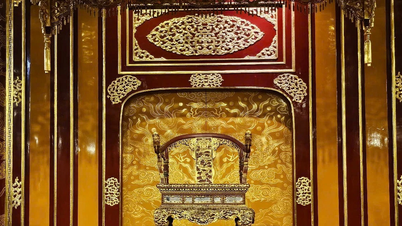

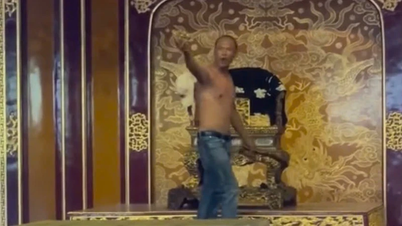


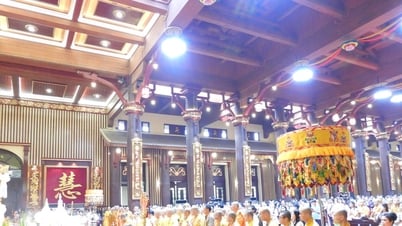







![[Photo] French President Emmanuel Macron and his wife begin state visit to Vietnam](https://vphoto.vietnam.vn/thumb/402x226/vietnam/resource/IMAGE/2025/5/25/03b59c7613144a35ba0f241ded642a59)
![[Photo] Ea Yieng commune settlement project abandoned](https://vphoto.vietnam.vn/thumb/402x226/vietnam/resource/IMAGE/2025/5/25/57a8177361c24ee9885b5de1b9990b0e)
![[PHOTO] Hanoi fences off demolition of "Shark Jaws" building](https://vphoto.vietnam.vn/thumb/402x226/vietnam/resource/IMAGE/2025/5/25/1b42fe53b9574eb88f9eafd9642b5b45)


![[Photo] Funeral of former President Tran Duc Luong in Quang Ngai](https://vphoto.vietnam.vn/thumb/402x226/vietnam/resource/IMAGE/2025/5/25/ccf19a3d8ea7450bb9afe81731b80995)

































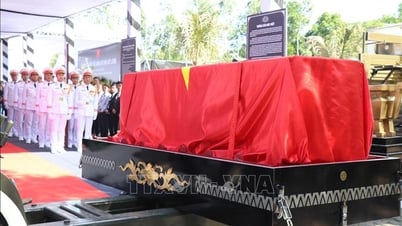









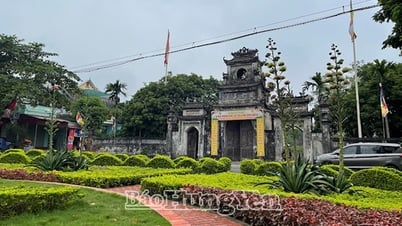


















Comment (0)